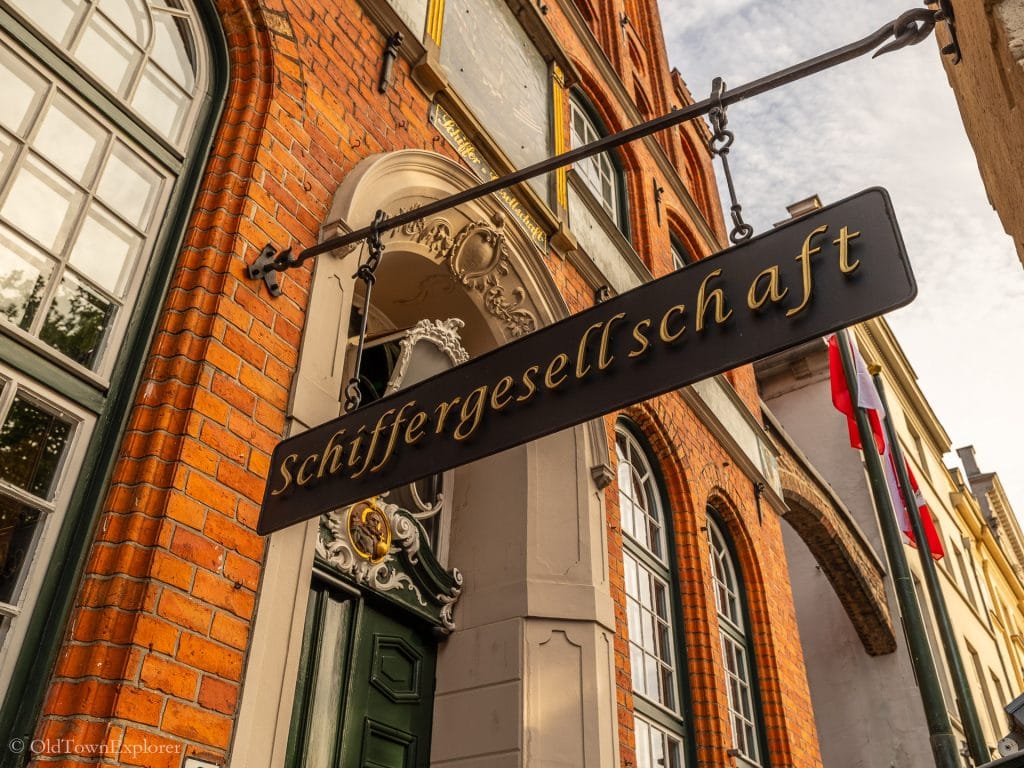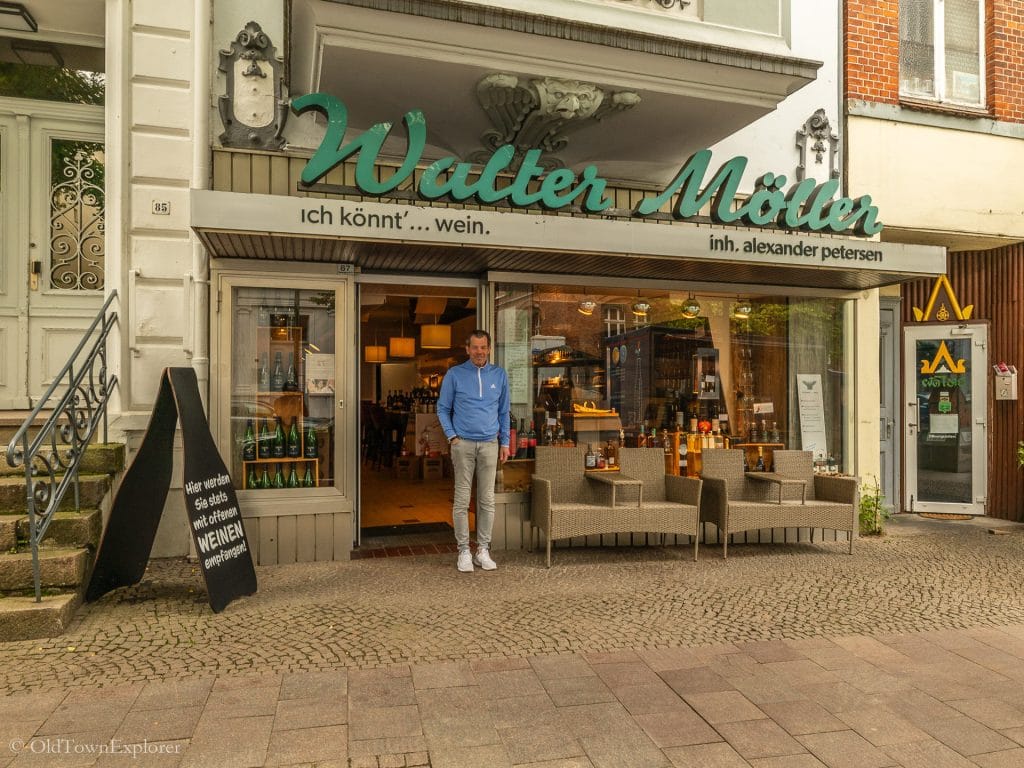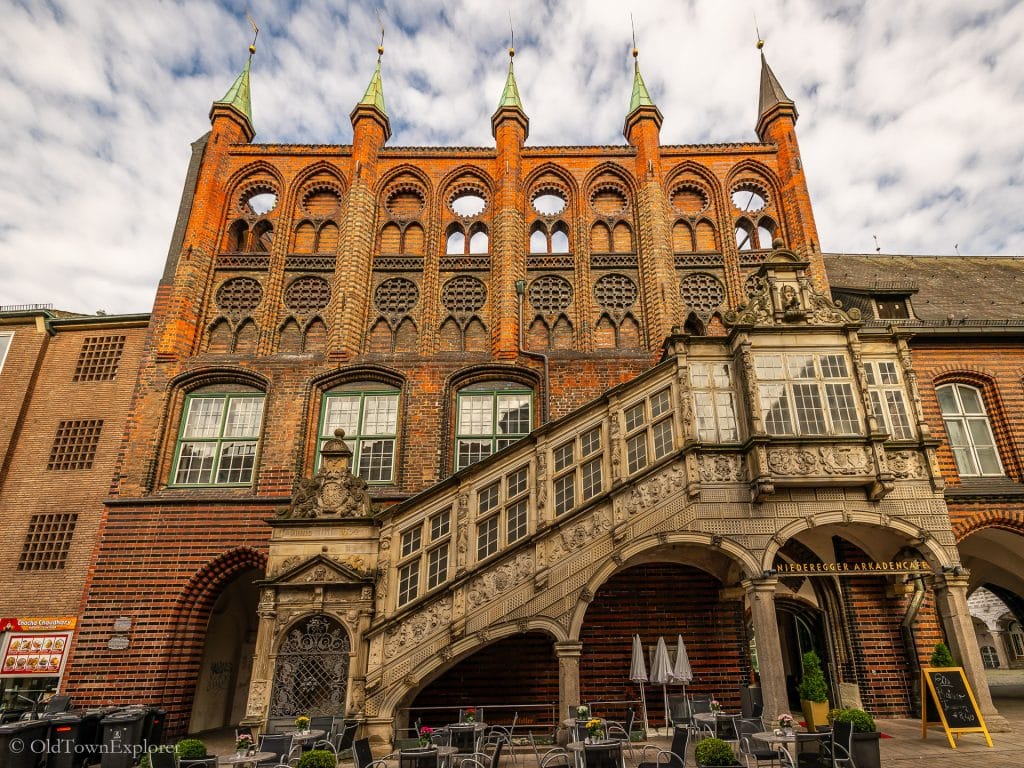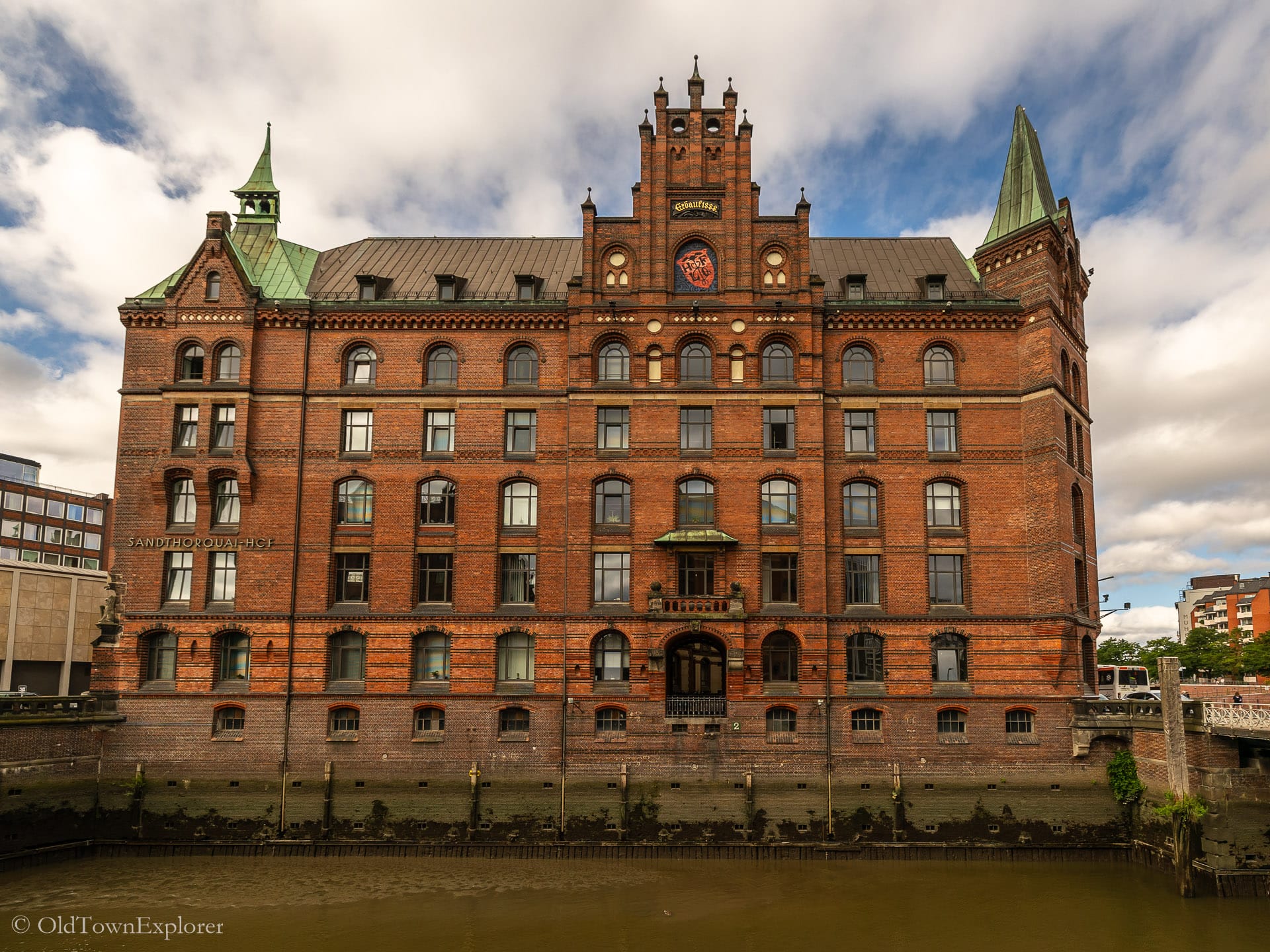Lübeck
Food | Wine | ArchitectureExplore Lübeck: Food, Wine & Architecture
Lübeck is a historic city in northern Germany, located on the Trave River near the Baltic Sea. Once the capital of the Hanseatic League, it remains one of Europe’s most important centers of medieval trade and Brick Gothic architecture.
The Old Town, surrounded by water and filled with spired churches, merchant houses, and narrow alleys, is a UNESCO World Heritage Site. Visitors can sample northern German dishes like smoked fish and marzipan, browse local wine cellars for Hanseatic-era imports like Rotspon, and explore landmarks like the Holstentor and St. Mary’s Church.
We spent a month exploring Lübeck—walking the Old Town, visiting local markets, and researching its food, wine, and architecture. This guide brings together everything we learned to help you plan your own trip with confidence and context.
This website contains affiliate links that may earn us a small commission at no additional cost to you.
Lübeck Food
Lübeck’s food scene reflects its maritime history, Hanseatic trade routes, and northern German traditions. From smoked eel and herring to hearty stews and marzipan desserts, local dishes reveal the city’s deep connection to both land and sea. Restaurants range from historic taverns to modern bistros, while weekly markets and specialty shops offer regional products like Holstein cheese and rye bread.
For travelers interested in food culture, Lübeck offers an accessible and authentic look at northern Germany’s culinary heritage—rooted in tradition but open to contemporary interpretations.

Lübeck Wine
Lübeck is not a wine-producing city, but its role as a Hanseatic trading hub made it an important center for the import, aging, and distribution of wine—particularly red wines from France and white wines from the Rhine and Mosel. One of the city’s most distinctive contributions is Rotspon, a red wine imported from Bordeaux and aged in Lübeck’s cellars, giving it a regional identity despite its foreign origin.
Today, this legacy is reflected in the city’s cellar bars, historic wine shops, and restaurants that serve German and imported wines by the glass. While Lübeck’s wine culture is rooted in trade rather than terroir, it remains an integral part of the city’s culinary history.

Lübeck Architecture
Lübeck’s Old Town is one of Germany’s best-preserved medieval city centers, known for its distinctive Brick Gothic architecture and layout shaped by centuries of Hanseatic trade. Encircled by the Trave River and dotted with spires, gabled warehouses, and cobbled lanes, the area is a UNESCO World Heritage Site. Iconic structures include the Holstentor gate, St. Mary’s Church, and the historic town hall, each reflecting the city’s prominence in the Middle Ages.

Where Is Lübeck Located?
Lübeck is located in northern Germany in the state of Schleswig-Holstein, near the Baltic Sea. The city sits along the Trave River, which flows through the Old Town and into Lübeck Bay, a natural harbor. Its proximity to the coast and network of navigable waterways shaped its development as a major medieval port.
When Is The Best Time To Visit Lübeck?
Choosing the right time to visit Lübeck depends on what you value most—weather, crowd levels, or affordability. Below, we break down the best times to go, including ideal months for pleasant weather, the benefits of traveling during the shoulder season, and when to find the best value on accommodations and activities.
Weather
The best weather is a personal preference. We find the best weather for exploring a city is around 55°F and sunny. The weather in Lübeck is generally mild, but winters can be cold and damp, while summers are comfortable, with average highs in the 70s°F. If you’re visiting in January or February, be prepared for chilly temperatures and shorter days.
Below is a chart showing the average high and low temperatures for each month so you can decide what is best for you.

Shoulder Season
Lübeck’s shoulder season is from May to June and September to October. These months offer mild weather, manageable crowds, and lower prices on hotels, making them ideal for exploring the Old Town and nearby coast without peak-season congestion.
We spent the entire month of August in Lübeck. The weather was cool and pleasant in the morning, but warmed up during the day.
Best Value
For the best value, visit Lübeck in May or September. These months offer decent weather for sightseeing and fewer tourists, allowing for lower hotel rates and a more relaxed experience in the Old Town and along the waterfront.
Best Places to Stay In Lübeck
Hotels in Lübeck
For the most immersive experience, we recommend staying near Market Square (Marktplatz) in Lübeck. This central area is home to traditional guesthouses, boutique hotels, and historic streets, all within walking distance of the city’s main architectural and cultural attractions.
Use the interactive map below to search for accommodations by date, budget, and amenities.
Other Things to Know About Lübeck
Airport
The main airport serving Lübeck is Lübeck Blankensee Airport (IATA: LBC), a compact regional airfield located approximately 7–8 km south of the Old Town and Holstentor, with a 12‑minute train ride or 10–11 minute drive via taxi or car to the city center.
A handful of European low-cost and charter airlines—such as Ryanair—operate seasonal flights, making it a convenient gateway for budget-conscious travelers.
The airport features its own railway station, a regular bus line (Line 6), taxi rank, car rental desks, and short- and long‑term parking, ensuring smooth onward travel into Lübeck.
Train Station
Lübeck’s main rail hub is Lübeck Hauptbahnhof, the busiest station in Schleswig-Holstein, serving around 31,000 passengers daily via long-distance and regional services. Opened in 1908 and modernized in 2007, the station’s distinctive reception hall spans over 10 tracks and four platforms.
Located just 1 km (about a 10–15‑minute walk) west of the Old Town, it’s easily accessible by a frequent 5‑minute bus ride (€2–3), taxi, or on foot.
Time Zone
Lübeck is in the Central European Time zone (CET = UTC + 1). Daylight saving time is observed from the last Sunday in March to the last Sunday in October, during which clocks are set one hour ahead to Central European Summer Time (CEST = UTC + 2).
Currency
The Euro (€) is the currency of Germany.
Language
German is the official language, but English is widely understood in Lübeck, especially in hotels, restaurants, and tourist areas.
Visa
Citizens from the United States, the United Kingdom, Canada, and Australia don’t need a visa to visit Germany for stays of up to 90 days within a 180-day period.
For more information on visa-free travel in Germany and the Schengen Area, check out our article on traveling visa-free.
Electricity
Germany’s electrical outlets are Type C and F. Both types have two round pins, but Type F also includes grounding clips on the sides. The standard supply is 230V with a frequency of 50Hz.
Travelers from the United States will need a plug adapter and should check if their devices support 230V. For convenience, we recommend a travel power strip with multiple USB ports and standard outlets—this allows you to charge several devices using a single adapter.
SIM Card
Travelers will want a SIM card for Germany. You can get either a local SIM card or an eSIM card.
To get a local SIM card, you must find a local cellular service provider, often stand in line for assistance, show your passport, and complete some paperwork. The SIM cards work great, but purchasing them is somewhat inconvenient. This option is best if you need more than 5GB of data.
We use eSIMs exclusively because they can be purchased before arrival in a new country and activated when you hit a cell tower in the country. We use Airalo eSIMs. They work great, and I recommend them if you plan to use less than 5 GB of data during your stay or if you need internet immediately on arrival.
Car Rental
The fantastic train system in Germany makes rental cars unnecessary for most destinations. However, rental cars are needed to reach smaller towns and explore the countryside. In addition to the major car rental companies found in the United States, Sixt and Europcar are common throughout Europe. For a comparison of rental car offers from large, international brands and smaller regional brands, we recommend Discover Cars.
FAQs About Lübeck
What is Lübeck, Germany known for?
Lübeck is known for its medieval Old Town, Brick Gothic architecture, and role as the leading city of the Hanseatic League. It’s also famous for the Holstentor gate, historic churches, and UNESCO World Heritage status.
Why is Lübeck not a free city?
Lübeck lost its status as a Free City in 1937 under the Greater Hamburg Act, when the Nazi regime dissolved its independent governance and merged it into the Prussian province of Schleswig-Holstein.
Is Lübeck worth visiting?
Yes, Lübeck is worth visiting for its well-preserved Old Town, unique Gothic architecture, and maritime heritage. Travelers interested in history, architecture, and northern German culture will find plenty to explore.
What is Lübeck famous for food?
Lübeck is famous for marzipan, smoked fish, and traditional northern German dishes. The city’s culinary offerings reflect its coastal location and Hanseatic trading history.
What traditional foods should I try in Lübeck?
Lübeck is best known for its marzipan, especially the famous Niederegger brand, which dates back centuries. Additionally, the city’s coastal location makes Fischbrötchen (fish sandwiches), smoked eel, and Brathering popular local specialties.
What is Rotspon and why is it special in Lübeck?
Rotspon is a red wine uniquely linked to Lübeck’s Hanseatic past. Wine grown in France was shipped in wooden barrels and then aged, bottled, and sold here—giving it a distinct local character. You can still find it in traditional wine shops and cellar bars today.
Where can you taste wine in Lübeck’s Old Town?
Several historic wine shops and cellar bars in Lübeck’s Old Town offer local and international selections. Look for cozy merchants’ wine cellars in medieval buildings—perfect for sampling Rotspon and other German varietals in an atmospheric, authentic setting.
What architectural styles define Lübeck’s Old Town?
Lübeck’s Old Town is a showcase of Brick Gothic architecture, featuring spired churches, gabled merchant houses, and imposing city gates like the Holstentor. Its medieval street layout, courtyards, and UNESCO‑protected skyline offer a vivid example of Hanseatic-era design.
Are there hidden architectural gems in Lübeck’s courtyards and passageways?
Yes—many of Lübeck’s courtyards and narrow alleys are tucked behind its main streets. These spaces, once housing merchants and workers, feature intimate medieval architecture and deserve exploration on a walking tour.
Lübeck Blog Posts
Want more details about life in Lübeck? Check out our in-depth blog post:
Explore Hamburg, Germany
Discover Hamburg’s architectural story, from Hanseatic churches and warehouses to modern icons like the Elbphilharmonie. Explore what to see and how the city rebuilt itself.

